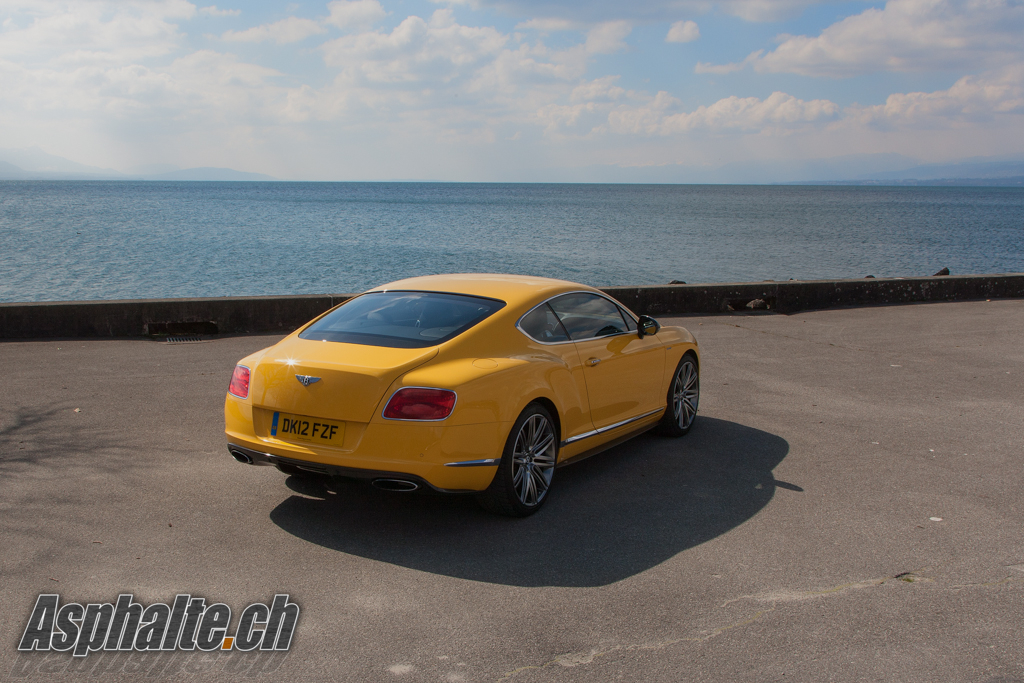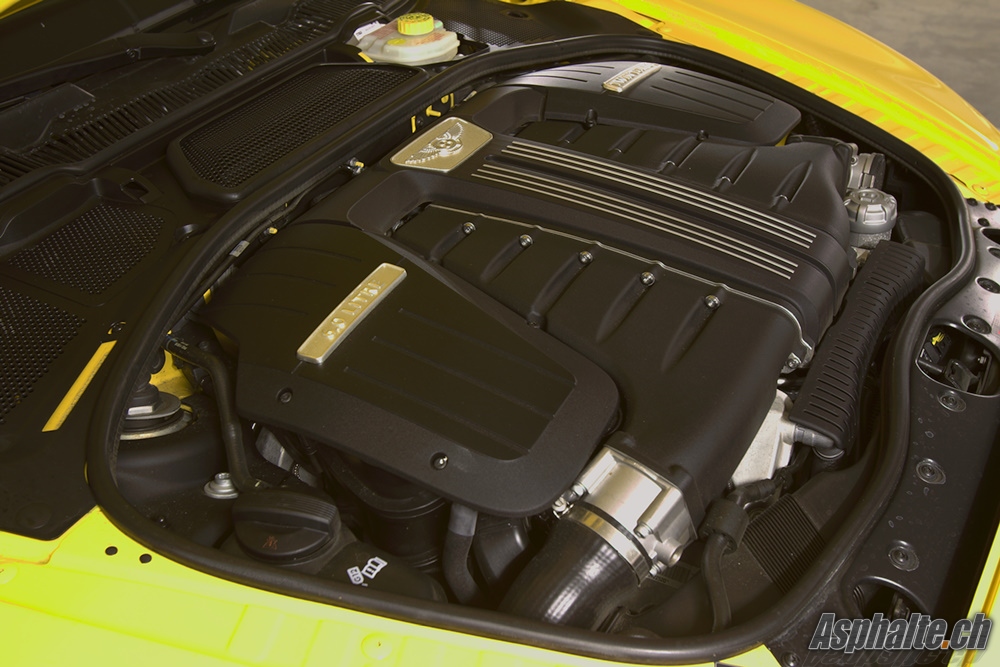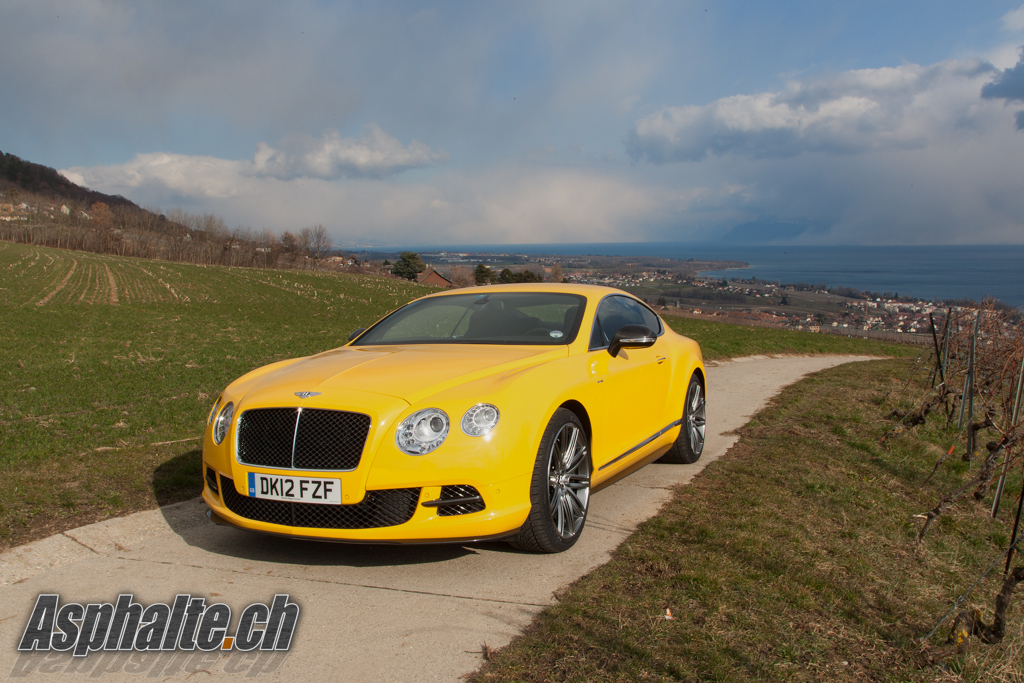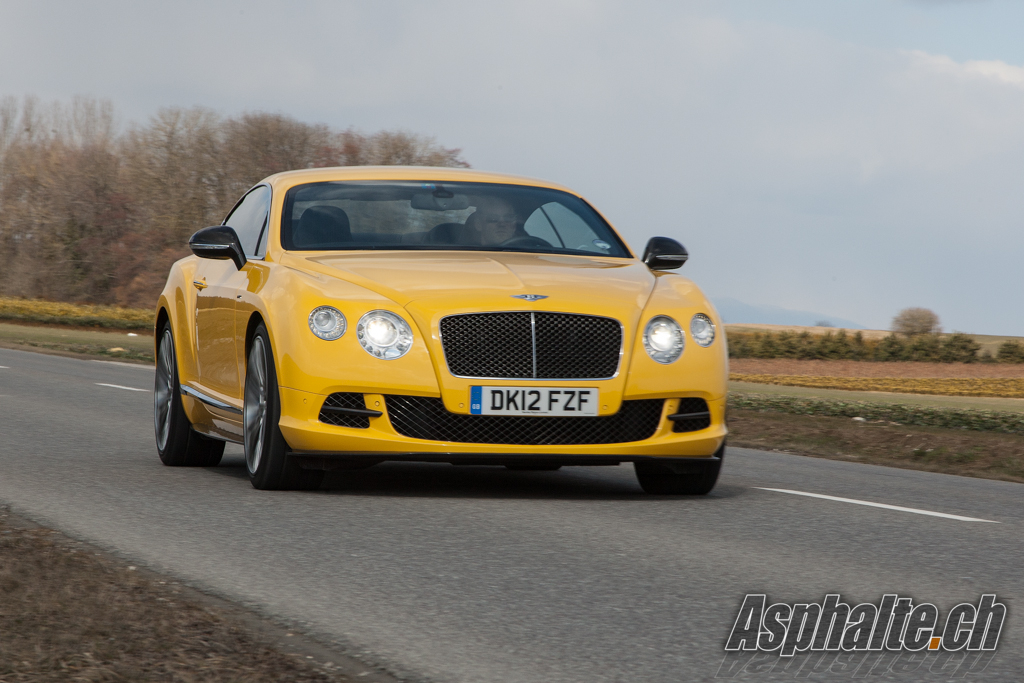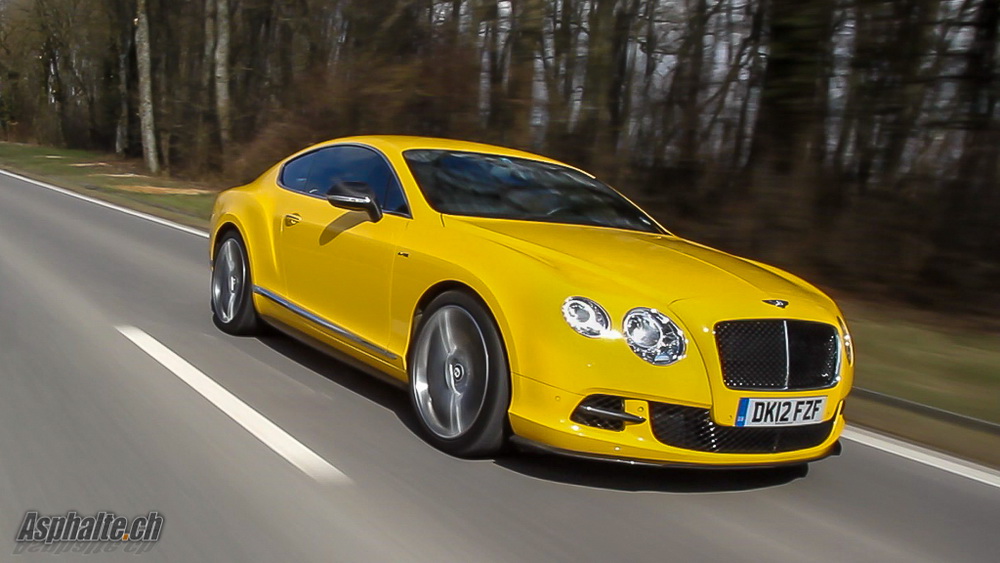Road Test: Bentley Continental GT Speed
In comparison with the Continental GT W12 6.0, the Speed version gains 50hp in peak power to achieve 625hp, while peak torque leaps by 100 Nm to a very respectable 800 Nm (590 lbft) from 2000 rpm. The previous Continental GT Speed claimed 610hp and 750 Nm. As a reminder, the W12 is built on two six cylinder banks angled at 72 degrees, each bank being itself a narrow angle V6 with 15 degrees between piston axes.
The engine is a familiar item, but the new 8 ratio ZF gearbox is a notable change over the prior generation. Lower gears are performance oriented while the three upper ratios focus on long distance comfort and fuel efficiency, the 8th gear allows a relaxed 150 km/h cruise at 2000 rpm in monastic silence, barely disturbed by air whispering against the windscreen. In mellow driving, the ZF unit is extremely well sorted, juggling swiftly through gears to maintain engine revolutions as low as possible, but prompt to downshift on request. In these conditions, the Continental GT delivers the expected effortlessness, serene and agile, swift but not rushed. The shorted paddles mounted high on the steering column – a Bentley signature – allow intervention at any moment. Automatic mode resumes after a few seconds.
One slot further on the gear selector, the S mode is a stark contrast. The gearbox drops immediately two ratios and maintains much higher revs, almost to the point of a caricature and hardly suited to the engine ample torque curve. S mode also forbids access to the 8th ratio and alters the management of the exhaust system. A thunderous, enchanting note, well calibrated to be an integral part of the driving experience but not intrusive. The sportier setting adds a marbled rumble at throttle lift off. This system is incredibly well judged, I could not conceive a Bentley Continental GT with less exhaust presence, but more would be over the top.
As a consequence, I gave very limited attention to the optional Naim sound system (a 9045 CHF option). Listening to an interpretation of “Thus spoke Zarathustra” found on the hard drive highlighted more of the recording flaws than the prowess of the HiFi system. Another alternative to savor the W12’s symphonic abilities is to swing the gear lever – crowned with a sublime knurled knob – to the right of the D position: manual mode applies the same trickery to the exhaust valves, but leaves gear changes entirely to the driver.
The gearbox then upshifts with far more urge than the 600-800 milliseconds claimed on the spec sheet, but not without some harshness. The torque converter locks pretty abruptly on wide open throttle shifts, feeling reminiscent of older automated manuals, but not on par with the best contemporary twin clutch transmissions, such as Porsche’s or Ferrari’s. Admittedly, very few of them would be capable of coping with the massive torque of the W12, but they still are today’s benchmark. Hard to say whether this surprising harshness was induced in order to give a mechanical feel to the Speed, or whether it is an adverse consequence of requesting fast shifts from the ZF gearbox. Rev matching on downshifts is well tuned and at no time during this road test was I inconvenienced by a spurious or denied gear change.

